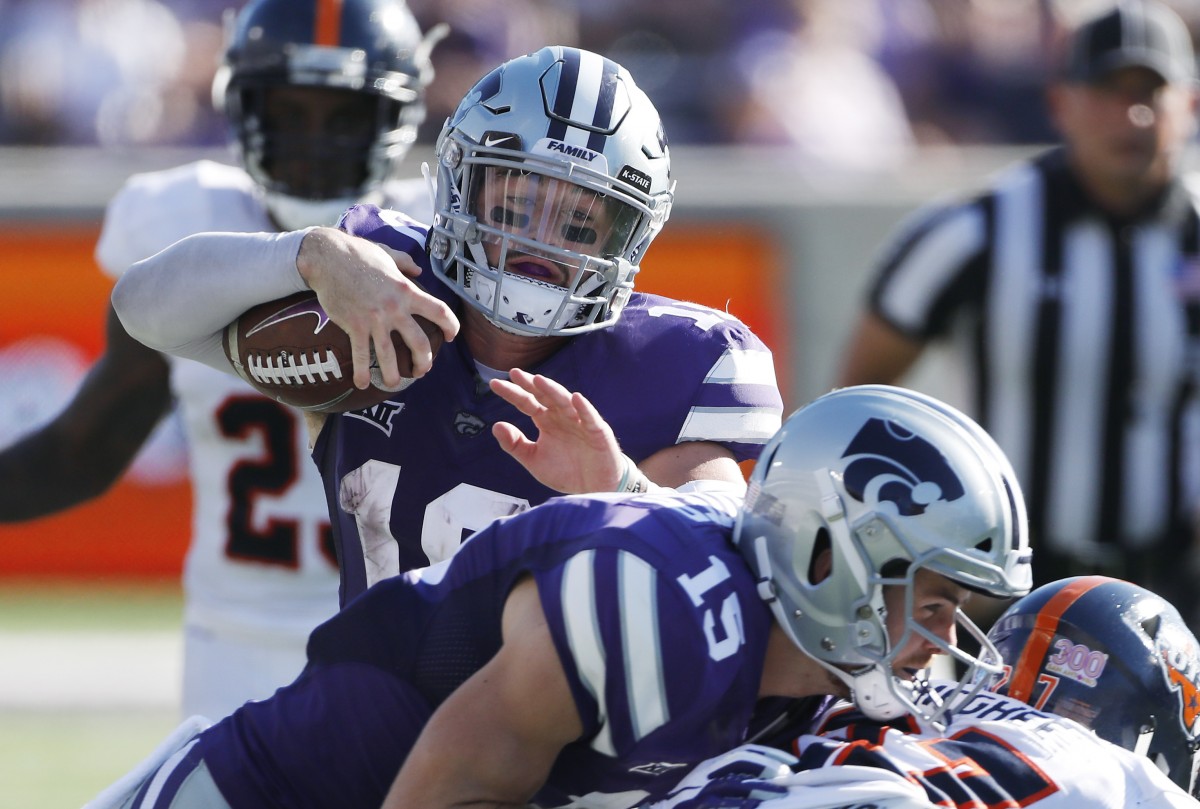MORGANTOWN — Dana Holgorsen and Bill Snyder would like you to think the differences between their programs are part of a vastly overstated narrative.
Currently in his 27th season at Kansas State, Snyder downplayed the characterization of the game as “old school vs. new school.” Holgorsen went a step further, insisting that the teams actually have more in common than you’d think.
“I don’t think there’s a whole lot of difference, honestly,” Holgorsen said. “Everybody wants to compare the new-school, old-school way of this game with Kansas State and West Virginia. There’s a lot of similarities that I see.
“They’ve been on the forefront of a lot of scheme things offensively, defensively and especially special teams-wise. I’ve copied a lot of their stuff.”
One thing that Holgorsen and no other current Big 12 coach has copied from Snyder? His reliance on making the quarterback part of the running game. Since the Mountaineers joined the Big 12 in 2012, no other program has come close to letting their quarterbacks run the way the Wildcats do.
“The one drastic difference from what you’re seeing is [the] quarterback run game versus more passing,” Holgorsen said.
Over the last six seasons, K-State quarterbacks have accounted for 41.3 percent of the team’s overall rushing yardage. No one else in the league eclipses the 25-percent mark during that timeframe.
Measured by sheer volume, Wildcats quarterbacks have rushed for 6,905 yards since the start of 2012. TCU is the next-closest team with 3,553 quarterback rushing yards. No other program is over the 3,000-yard mark for quarterback runs.
And no offense is more diametrically opposed to K-State stylistically than West Virginia.
Mountaineers quarterbacks have accounted for 9 percent of the team’s overall rushing yardage since joining the league. The majority of that was provided by Skyler Howard, who ran for 1,105 yards from 2014-’16. Outside of Howard, West Virginia quarterbacks have combined for 133 rushing yards since 2012.
In past years, K-State’s run-first mentality did not affect its ability to throw the ball. In 2013 and ’14, the Wildcats were second in the league in passing efficiency behind Baylor.
“Their pass plays are clearly up to date, and they do a great job of it,” Holgorsen said.
Though that’s been true before, the Wildcats passing attack has yet to break out this season. K-State ranks last in the Big 12 in completion percentage (52 percent) and ninth in yards per game (179).
Whether or not the Wildcats can get their aerial game in-sync, history shows WVU defensive coordinator Tony Gibson needs to be ready for K-State quarterbacks Skylar Thompson and Alex Delton to do damage with their feet.
“It’s tough. They do a really good job with that, and they have their whole offensive line back,” Gibson said. “So, we’re going to have some issues. We have to load the box up a little bit, bring an extra safety down and try to account for him.”
In the last two games in the series — WVU wins that snapped a four-game losing streak to the Wildcats — the Mountaineers held K-State quarterbacks to less than 3 yards per carry.
“We’ll try to get in the backfield. We have had success with that the last few years with negative plays, but the quarterbacks do a really good job,” Gibson said. “They’re patient. Then, when they find their seam, they’ll go.”
Twitter @bigahickey




